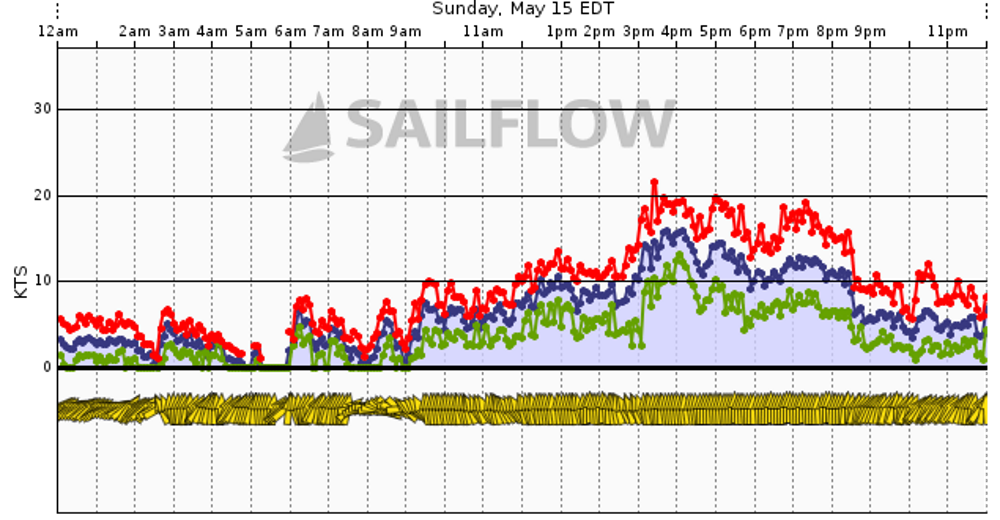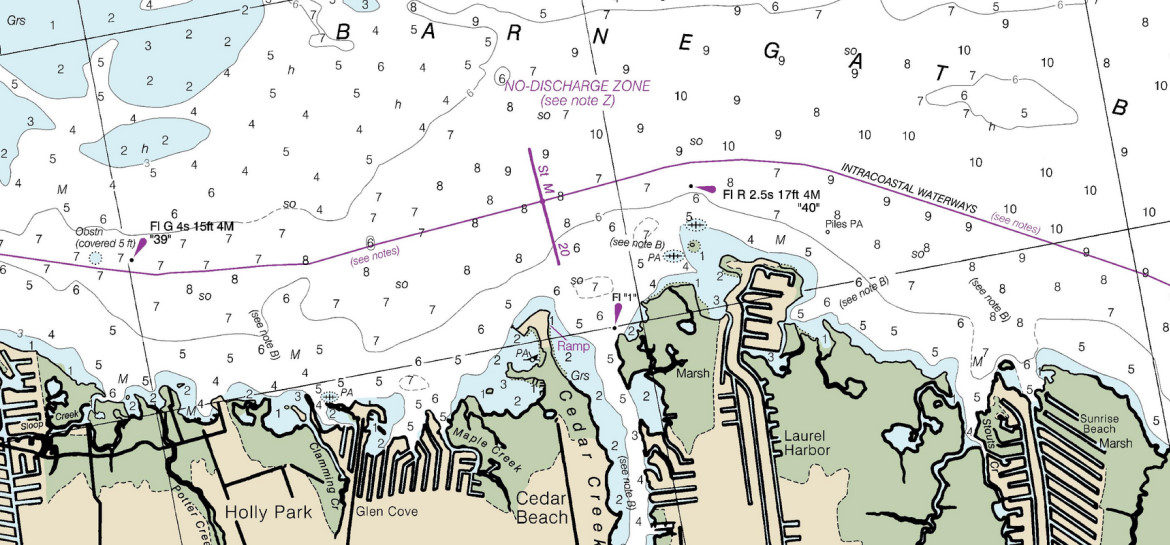
It’s that time of year: finishing up the lingering maintenance items and checking out ghost wrecks.
Jenn and I arrived at the marina at a reasonable time and started ticking off the last few spring maintenance tasks. The wind was light, and it’s always possible (perhaps probable) that the wind will jump up to 20kts regardless of the weather prediction, so we prioritized getting the sails on. I tied and untied a bowline about forty times on the outhaul. I feel like I know how to tie a bowline at this point, and could tell by looking at it that I was tying one, but it was like it was “tied to the wrong part.” I don’t know enough knot jargon to explain it coherently, but it kept coming out tied in the wrong direction, which was frustrating. Jenn asked me how to route the jib sheet, and I said “outside of everything to the block.” She seemed like she wanted clarification, and I couldn’t think of anything more to say about, so I just said it again while pantomiming it going outside of everything to the block. That’s 0% knot jargon and 100% sailing jargon, but aside from that imbalance, it went fairly smoothly.
Next was the engine. I had replaced the water pump the week before, and although there were no signs that water had gotten into the engine, it seemed like cheap insurance to change the oil. It was slightly annoying, since we just changed it in the fall and it’s not an exciting process to repeat, but last year I found a deal on six quarts of Rotella and it only takes two-ish. While waiting for the new oil to work its way down into the pan so that I could get a good reading on the dipstick, I changed the zinc in the heat exchanger. Ever since I found it with no zinc remaining, I’ve been on a more aggressive replacement schedule. There was still zinc there, but it was kind of crumbly, so I changed it to keep zincbits from getting somewhere they’re not supposed to be (if that’s even a thing).
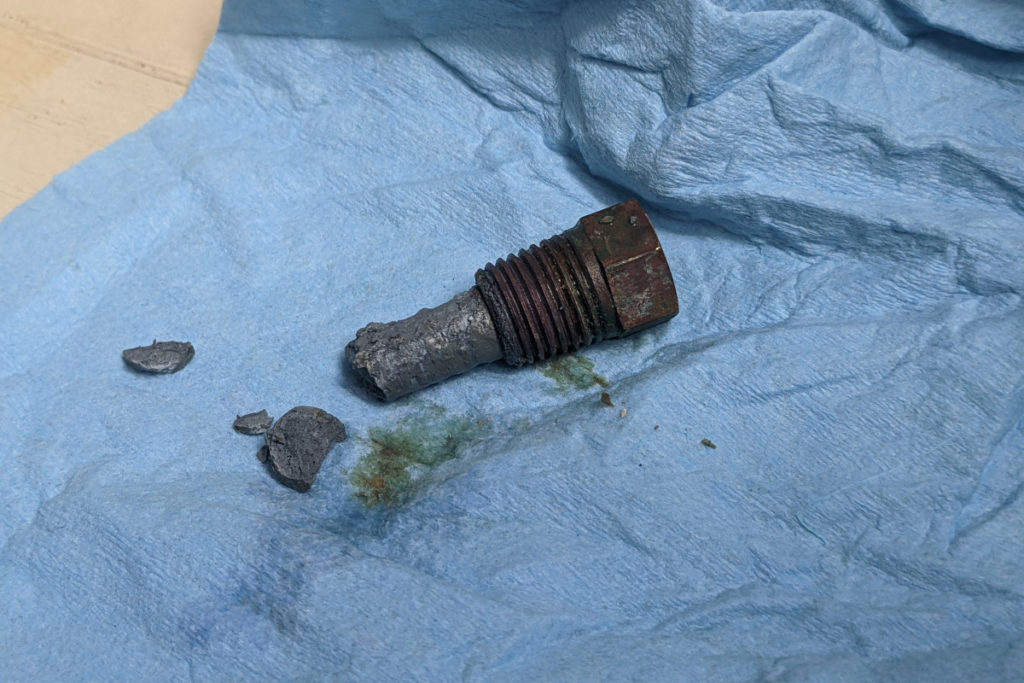
The last step was changing the fuel filters. Although it never seems like it at the time, since the little lever on the manual fuel pump only has about a half inch of travel and I have to operate it ~400,000 times to fully bleed the system, I do think we’re getting better at this. Once we got the engine started, it didn’t hiccup. In fact, we used it to power ourselves directly out of the marina for a brief shakedown sail.
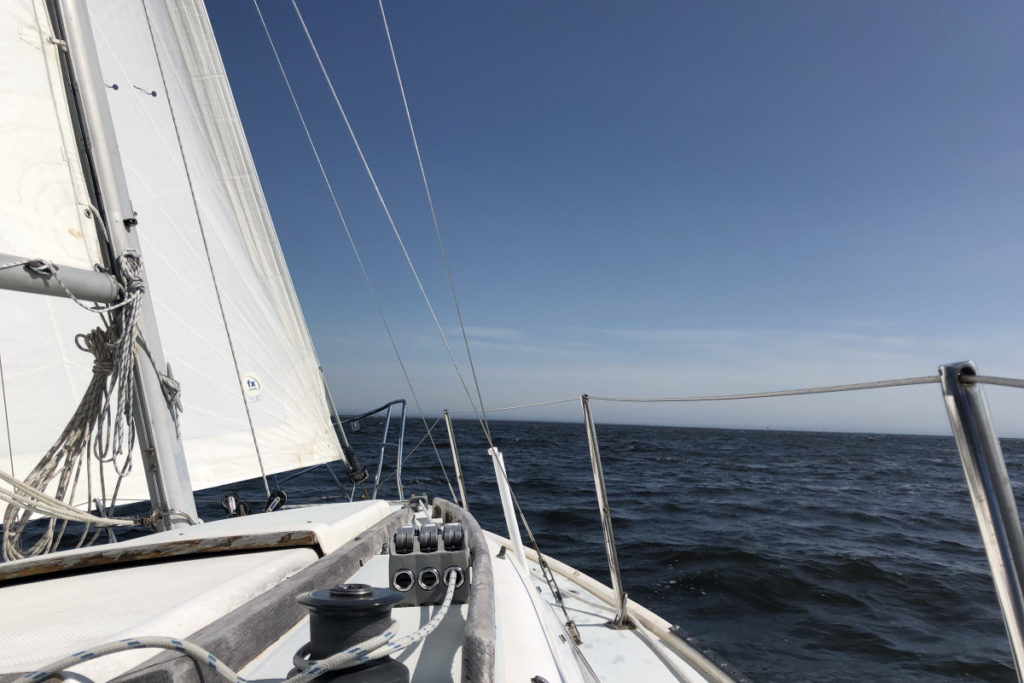
The wind was almost directly out of the south. We started on starboard tack to get across the bay a bit before coming about to continue upwind. As we sailed closer to Island Beach, I noticed a green channel marker floating in the middle of the bay, where there definitely is no channel. I checked the USCG Local Notice to Mariners when we got back, but there was no mention of a renegade buoy. I wanted to tack, so we didn’t continue on to investigate, but I noted it as “weird.”
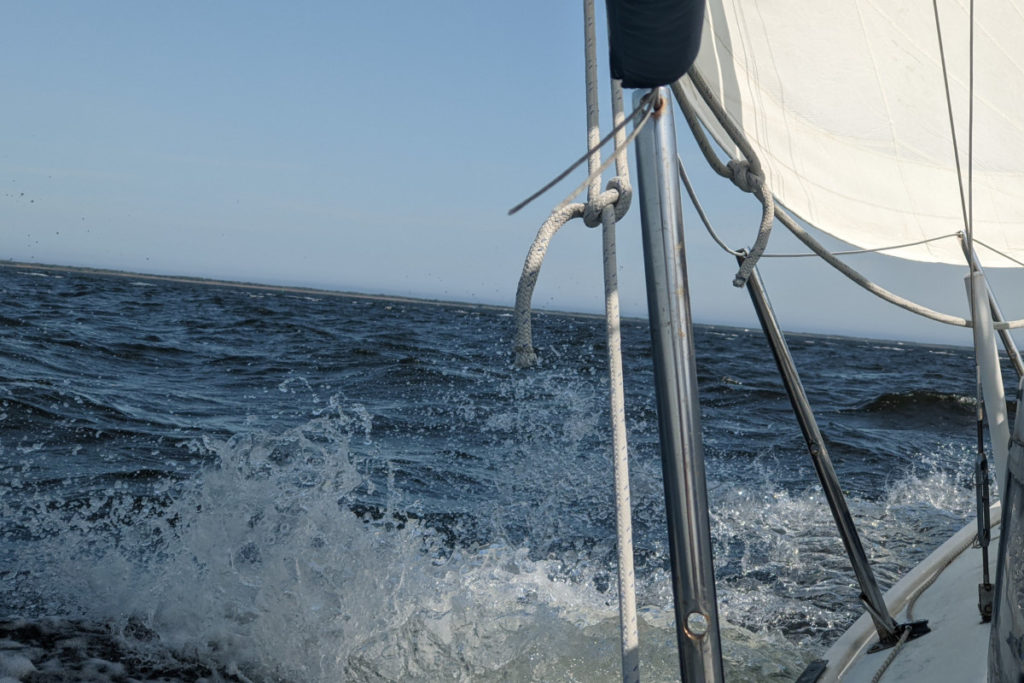
As soon as we tacked, we found that the starboard jib sheet had not gone around everything to the block, but was under the lifeline. It wasn’t a big deal. This is why we do shakedowns. We tacked back while we still had enough momentum to do so, got the sail trimmed on port, then heaved-to so that we could re-route the lazy sheet. This is also around the time that I realized the wind and waves were stronger than anticipated. It’s easy to see on the following chart when we left, since we were obviously doing this precisely during the peak gusts for the day.
I wanted to calm things down, so rather than continue beating south, we just headed off on a reach and stayed around the mouth of the creek. We briefly went wing and wing to keep the jib full while navigating around Berkeley Island, then continued broad reaching. Then I said aloud, “Is that a wreck?”
I think I bought my first nautical chart in 2009. I immediately found my home port on it, which, at the time, was Trixie’s Landing. Right around the corner from there was Berkeley Island Cove, and according to the chart, there was a shipwreck in it. When I was still in the “Should I buy a captain’s hat?” phase of boating, the idea of coming across a shipwreck held a cloying allure. I’m not sure why—it’s not like there were a lot of Spanish galleons or Civil War ironclads chilling (or sinking) at Berkeley Island—but it didn’t take me long to figure out that there’s nothing there. The supposed wreck is in about 18in of water. Unless it was the wreck of the famous SS Standup Paddleboard, it would be quite obvious, and it didn’t seem like a place where anyone would leave a derelict. But the symbol is still on the chart today:
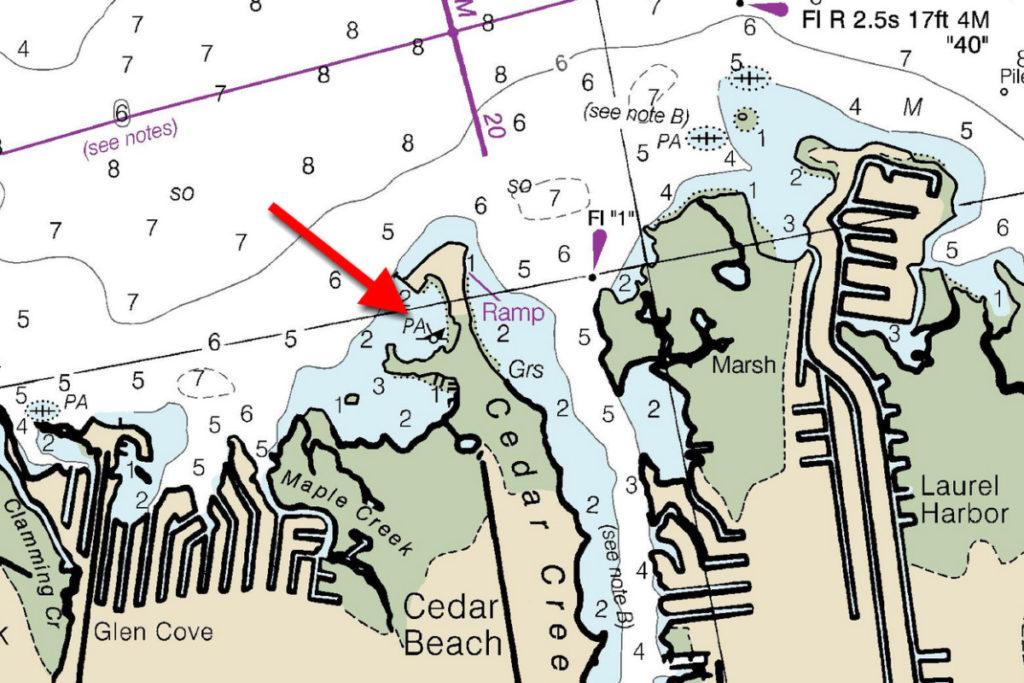
I even looked up NOAA Chart No.1 (which is the key to all of the chart symbology) to make sure that I wasn’t misinterpreting the icon, and it’s definitely the symbol for “Wreck showing any portion of hull or superstructure at level of chart datum.”
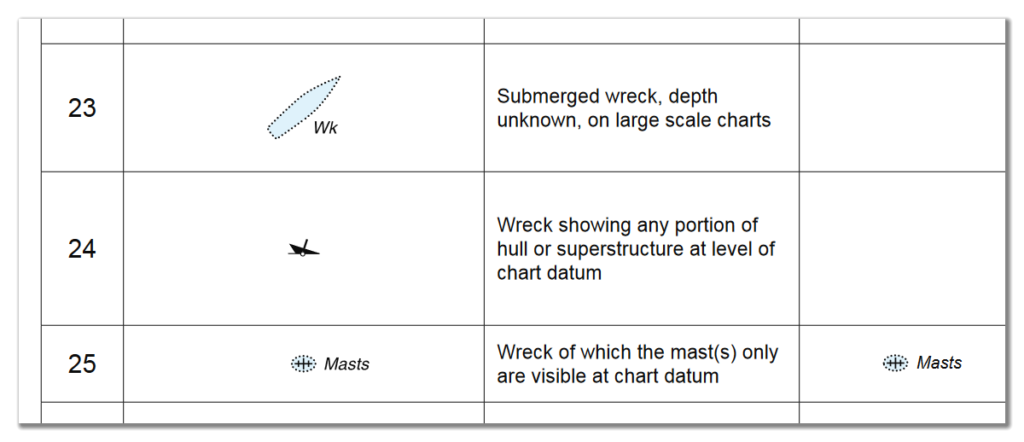
But on this day, approximately thirteen years after confirming that there was no wreck there, it sure looked like there was one. I asked Jenn if she wanted to check it out, and we tacked to head that way. It was disconcerting to be sailing straight into cove under full sail, but it’s still early in the season and there were no boats anchored in there. It is shallow though, so as we cleared the pier near the entrance, we furled the jib to slow ourselves down and to make close-quarters maneuvering under sail easier. I didn’t want to risk running aground, so we stayed well away from the marshy side of the cove, but we did get close enough to witness the reappearance of the ghost wreck, exactly where it was supposed to be on the chart.
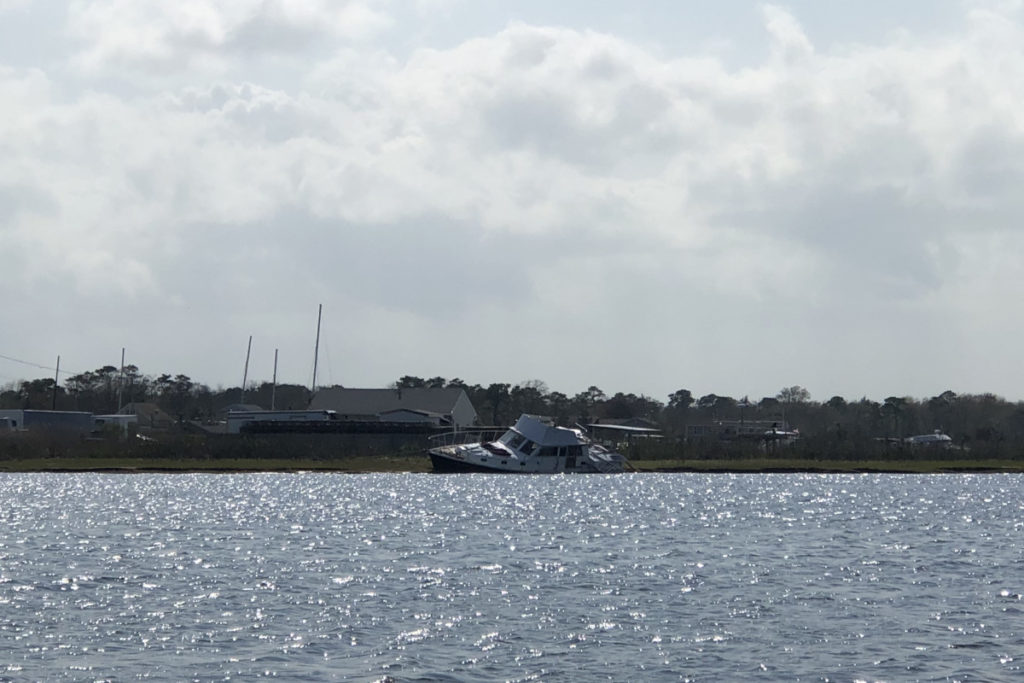
Not sure what’s up with that. This was my second notation of “weird.”
We turned around and sailed out, then generally started making our way back to the marina. The intention was only to do a quick shakedown, and we accomplished that. With the heaving-to, an abrupt change of plans, and tooling around a small cove on just the main, it was a more technical sail than I was anticipating, which is always fun for me.
I felt like there should have been a third instance of “weird,” just to round out the set, but there wasn’t. The closest thing that I could come up with was the pattern of pollen floating in the water between the slips at the marina, which had been blown into a design that looked like the event horizon of a black hole from science fiction. And I would emphasize the fiction part, because scientists just recently got an image of Sagittarius A*, the black hole at the center of our galaxy, and it’s nowhere near as visually exciting as this pollen. The actual image has more in common with the album cover of Soundgarden’s Superunknown (which does contain the song “Black Hole Sun.” Coincidence? (No.))
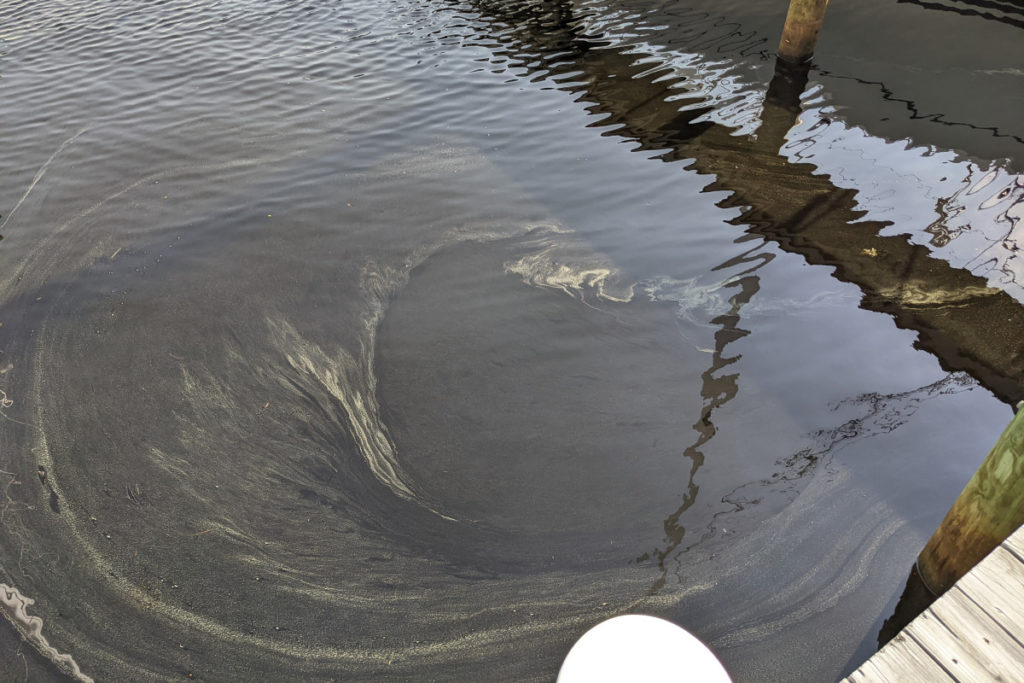
Regardless of any lingering weirdness, Fortuitous is now in sailing shape, so looking forward to getting out there more.
